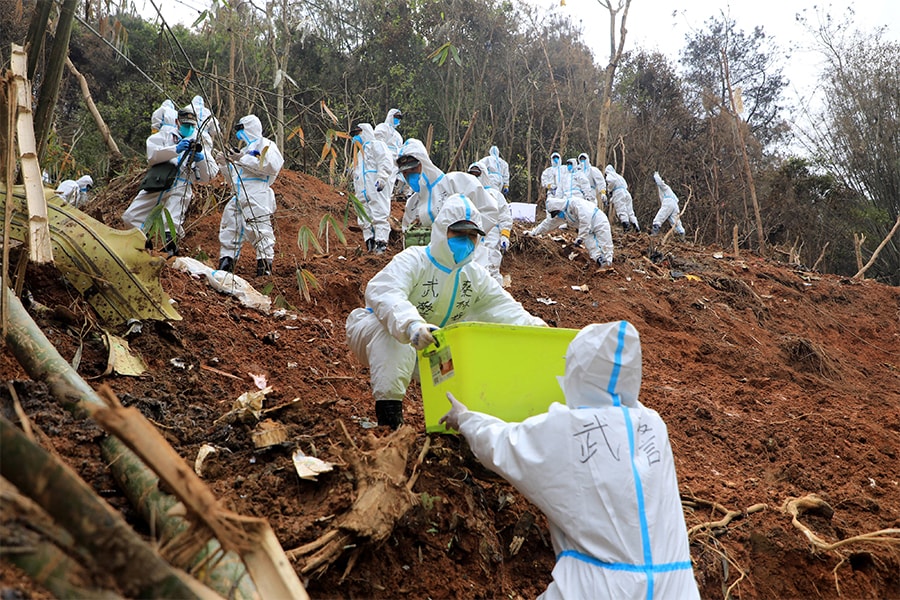
Mystery persists after initial report into China Eastern jet crash
A preliminary report released Wednesday by China's aviation safety regulator failed to dispel much of the mystery about why a China Eastern jet suddenly went into a nosedive in clear weather last month and crashed into a muddy hillside, killing all 132 people aboard
 This photo taken on March 26, 2022 shows paramilitary police officers transferring fragments of wreckage of the China Eastern passenger jet which crashed onto a mountainside in Tengxian county, Wuzhou city, in China's southern Guangxi region. The Boeing 737-800 was flying between the cities of Kunming and Guangzhou on March 21 when it nosedived into a mountainside, disintegrating on impact and killing all 132 people on board.
This photo taken on March 26, 2022 shows paramilitary police officers transferring fragments of wreckage of the China Eastern passenger jet which crashed onto a mountainside in Tengxian county, Wuzhou city, in China's southern Guangxi region. The Boeing 737-800 was flying between the cities of Kunming and Guangzhou on March 21 when it nosedived into a mountainside, disintegrating on impact and killing all 132 people on board.
BEIJING — The pilots had met China’s standards for flying a commercial jet. No problems were found with the aircraft before it took off. No dangerous cargo had been loaded aboard. Communications with the plane appeared normal until its deadly plunge.
A preliminary report released Wednesday by China’s aviation safety regulator failed to dispel much of the mystery about why a China Eastern jet suddenly went into a nosedive in clear weather last month and crashed into a muddy hillside, killing all 132 people aboard. The report mainly cataloged what was previously known about the crash.
“The investigation found that the flight and cabin crew onboard, as well as the maintenance and clearance personnel, met qualification requirements,” the report said. “Before it deviated from cruising altitude, there was nothing abnormal in wireless communications between the crew and air control or in the control commands.”
The report also suggested that obtaining more evidence from the plane’s two flight recorders could take some time.
“The two recorders on the plane were severely damaged in the crash,” it said, “and data recovery and analysis is proceeding.”
©2019 New York Times News Service







